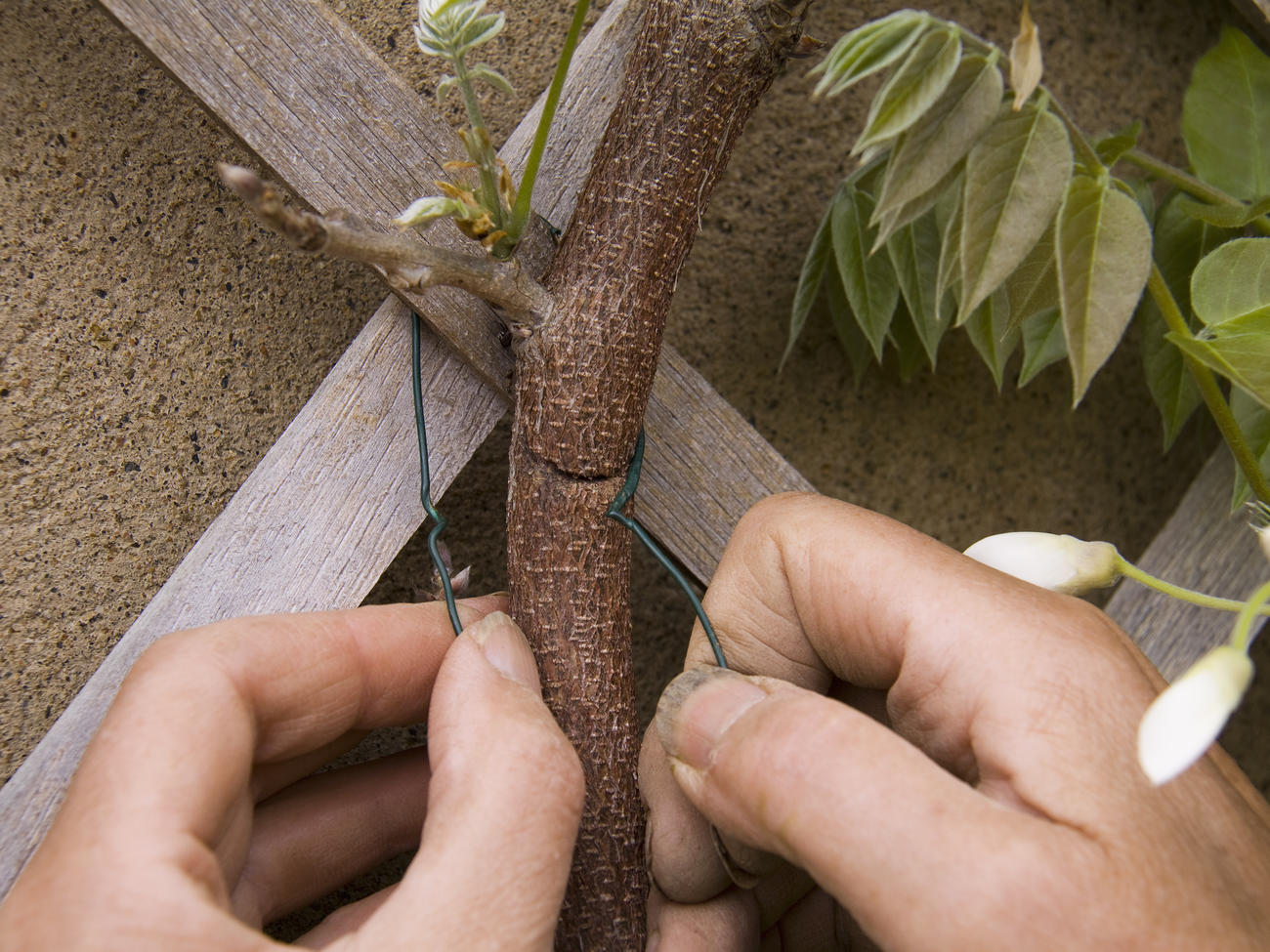
Training and Pruning Vines
Tips and techniques for encouraging growth and maintaining control

Saxon Holt
The stems of vigorous twiners like this clematis tend to become snarled. Often the best way to sort out the problem is just to snip through the tangles. Resultant dead growth will be easier to identify and remove later on.
Until a vine gets a firm hold on its support, you may need to tie it in place with twine or plastic garden tape. (For heavy vines, you can use thin rope or strips of canvas or rubber.) For clinging vines, you might tack plastic mesh over the stems until you see the aerial rootlets or holdfast discs adhering.
Once the stems of twining and scrambling vines gain some length, you can weave them through any open work support, such as a trellis or wire fence.
To encourage bushy growth on young vines, pinch out the stems’ terminal buds. If you want just a few vertical stems, though (for a tracery of growth around a column, for example), don’t pinch. Instead, remove all but one or two long stems at the base.
How to Paint a Wall with Limewash
Add richness, depth, and dimension to a room with this limewash wall paint technique.
0 seconds of 55 secondsVolume 0%
Press shift question mark to access a list of keyboard shortcuts
Keyboard Shortcuts
Shortcuts Open/Close/ or ?
Play/PauseSPACE
Increase Volume↑
Decrease Volume↓
Seek Forward→
Seek Backward←
Captions On/Offc
Fullscreen/Exit Fullscreenf
Mute/Unmutem
Decrease Caption Size-
Increase Caption Size+ or =
Seek %0-9
